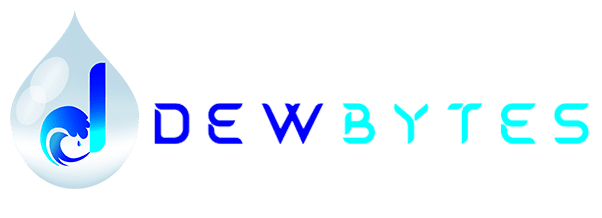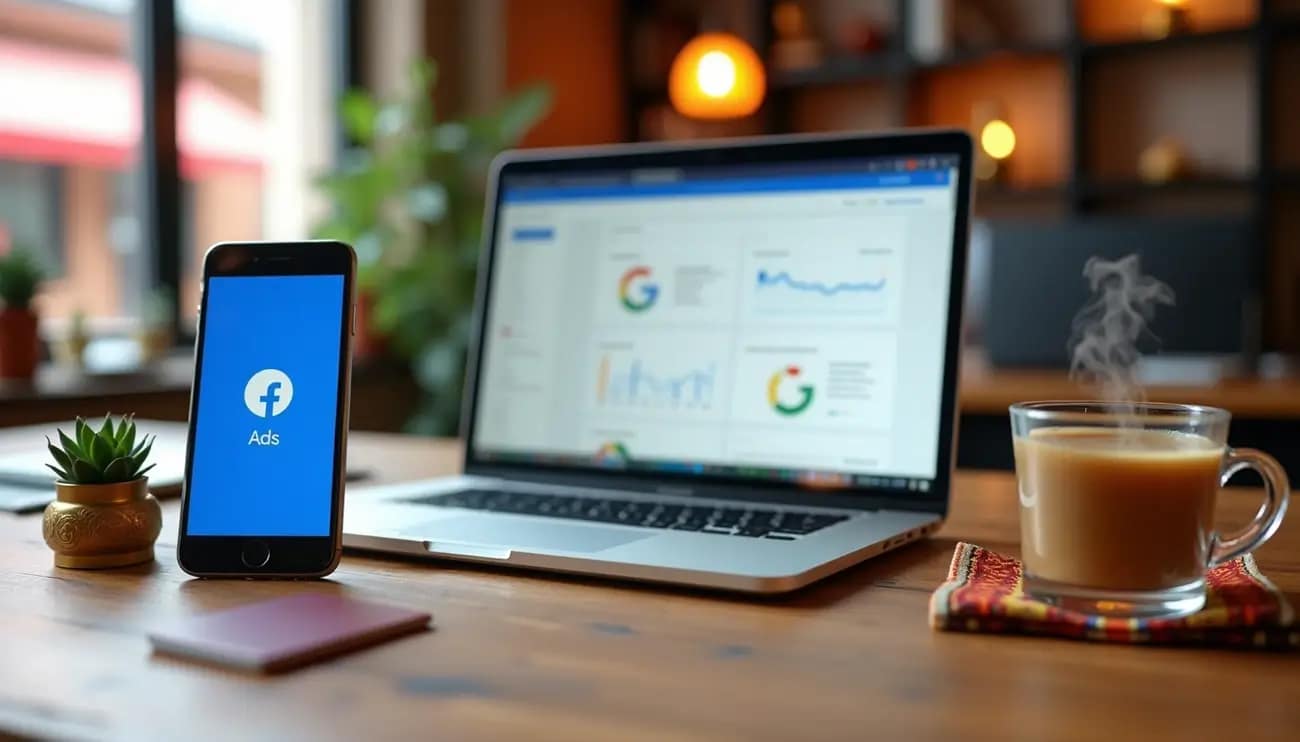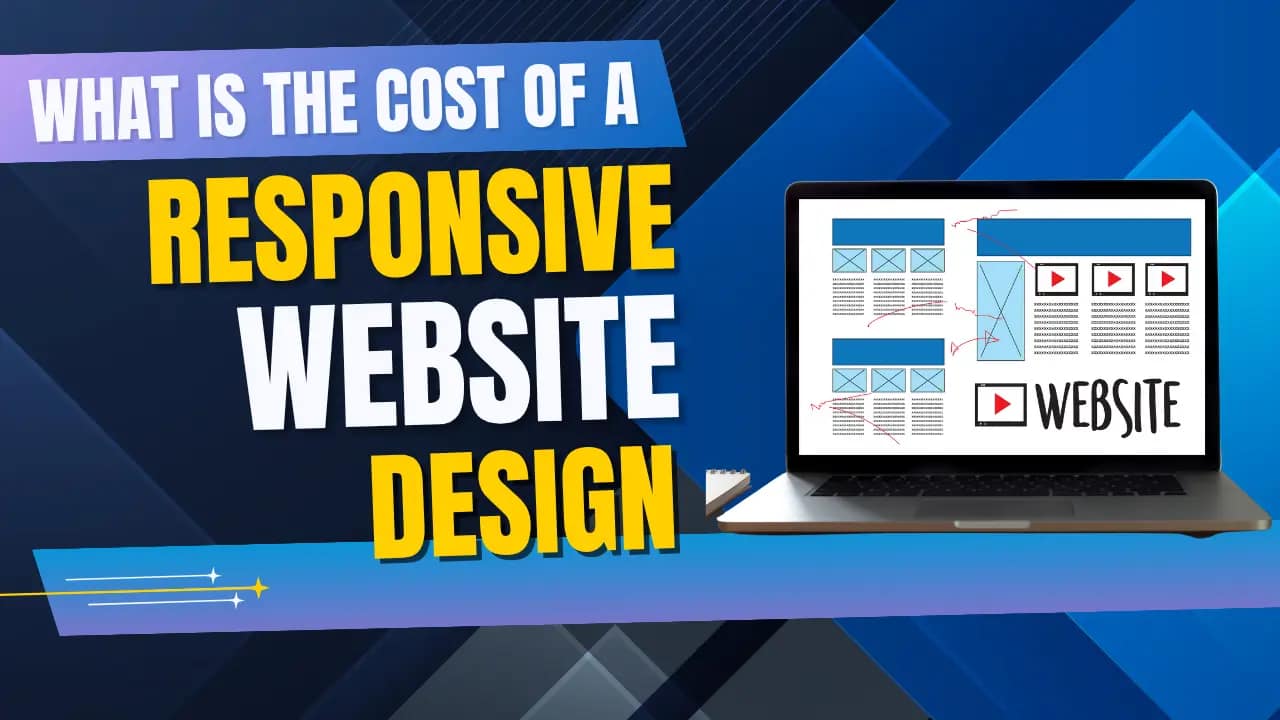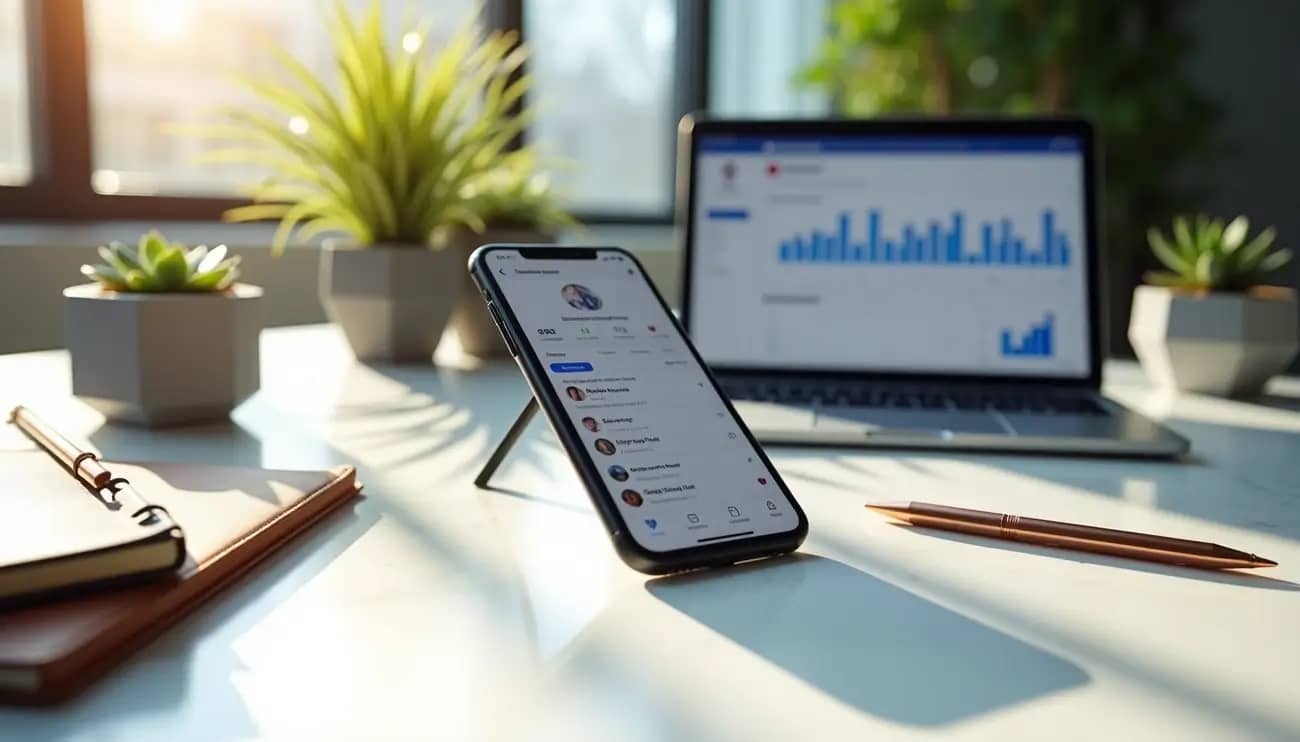Indian’s present digital marketing landscape has hit a new milestone. With over 700+ million people now use the internet, making up almost about 50% of India’s population, India’s digital ad market offers huge opportunities for small businesses. The real question is: should you invest in Facebook Ads or Google Ads? Each platform has strengths—Google excels at intent-driven search, while Facebook shines at audience targeting. Contact Dewbytes for the best Ad services for your business 100% ROI growth.
This guide compares costs, formats, and performance so Indian SMEs can make smarter choices. Small businesses face a crucial choice between Facebook Ads and Google Ads to power their digital marketing. Recent data shows that 89% of marketers find influencer marketing ROI matches or beats other channels. The question remains – which platform works best for small Indian businesses?
Digital marketing has proven results for small businesses. Take this small bakery that added local keywords like “best cupcakes in NYC” to their website. Their traffic jumped 40% almost immediately. The success of your strategy depends on your goals and who you want to reach. Smart marketing strategies let small businesses connect with more of the right people through SEO, social media, and paid campaigns. Let’s get into the real results from both platforms and break down everything from targeting options to ad formats, costs, and performance metrics in the Indian market.
Check Page Contents
ToggleAudience Targeting Capabilities
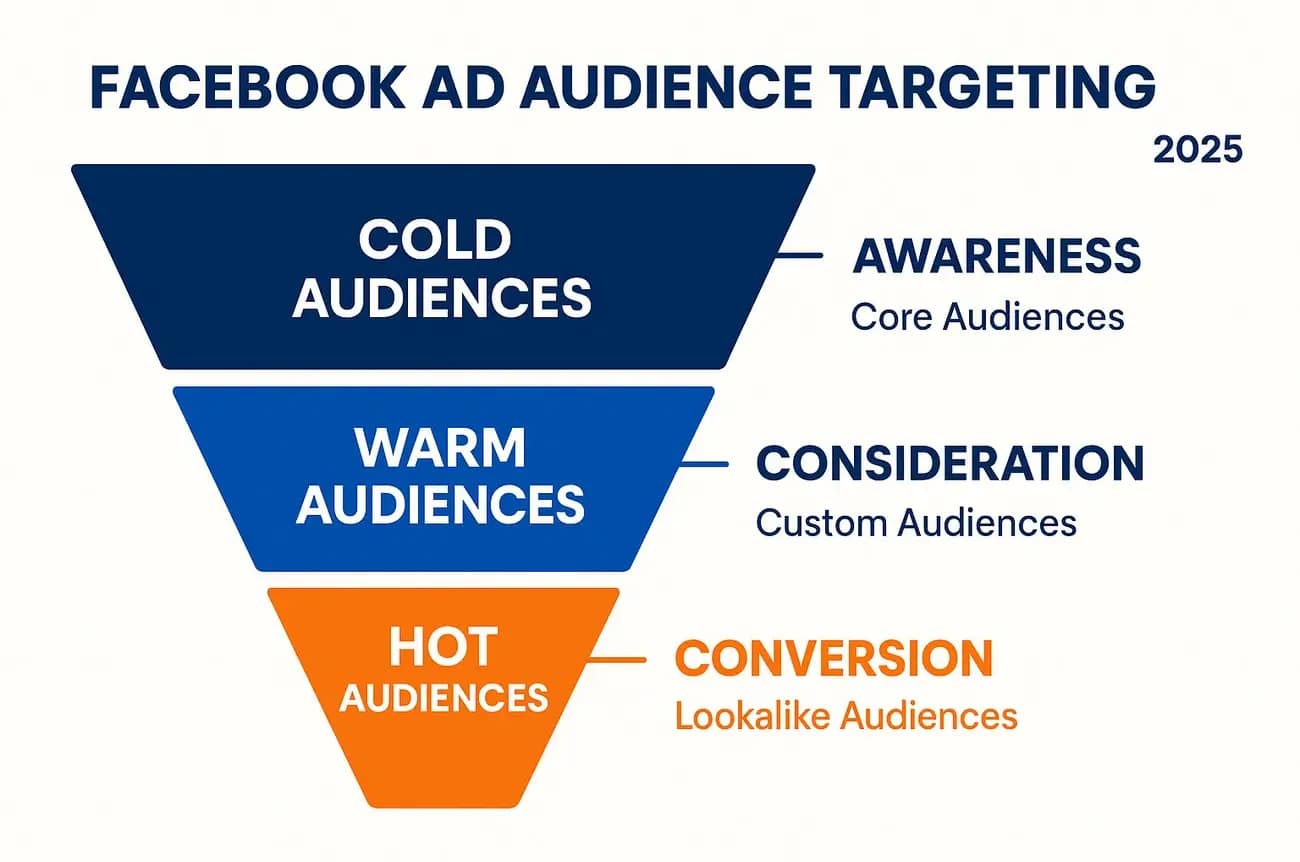
Image Source: Linear
The main difference between Facebook Ads and Google Ads shows in how they target users. This affects how small businesses reach potential customers in India’s varied marketplace.
Facebook Ads: Interest and behavior-based targeting
Facebook’s targeting system makes use of its huge user data to connect businesses with potential customers before they even think over making a purchase. The platform works differently from search-based systems. It lets businesses segment audiences based on detailed user information like interests, behaviors, demographics, and social connections.
The platform gives you several powerful targeting options:
- Interest-based targeting: You can target users who show interest in specific topics, pages, or keywords related to your business
- Behavioral targeting: You can reach audiences based on their digital activities, device usage, past purchases, and travel patterns
- Custom and Lookalike audiences: You can upload customer lists to retarget existing clients or find similar potential customers
Small businesses in India can use Facebook’s precise targeting to reach specific groups. You could target “fitness enthusiasts in Mumbai who follow nutrition pages” or “new parents in Delhi who shop for organic products.” This detailed approach works great for building brand awareness in India’s competitive market.
Google Ads: Keyword and intent-based targeting
Google Ads works through intent-based targeting. It connects businesses with users who actively search for specific products or services. This approach focuses on:
- Keyword matching: Google gives you different match types (broad, phrase, and exact) that control how closely a user’s search must match your keywords
- Search intent understanding: The platform knows the difference between commercial keywords (buying intent) and informational keywords (just looking for info)
- Location precision: You can target users by city, state, or pin code. Costs usually run higher in Tier 1 cities like Delhi, Mumbai, and Bengaluru
Google Ads shines at capturing high-intent traffic – users actively looking for solutions. The platform’s Keyword Planner tool helps small businesses find relevant keywords for their campaigns.
Which platform suits local targeting in India?
Both platforms offer reliable local targeting features. Each has its strengths for Indian businesses:
Google Ads excels at:
- Pin-code level precise targeting
- Capturing location-specific searches (like “best café near me”)
- Showing ads right when someone searches for local services
Facebook Ads works better for:
- Radius and custom geo-audience targeting
- Creating community around local brands
- Getting to users in smaller cities and towns
The cost-per-click in India shows a key difference. Google Ads typically costs ₹1.50-₹5.00 per click with better lead quality. Facebook Ads costs ₹0.50-₹1.50, giving you more impressions for less.
Your specific business goals should guide your platform choice. Local service providers who need immediate leads might find Google’s intent-based system more useful. New product launches or brand awareness campaigns often get better results with Facebook’s interest-based targeting for small businesses in India.
Ad Formats and Placement Options
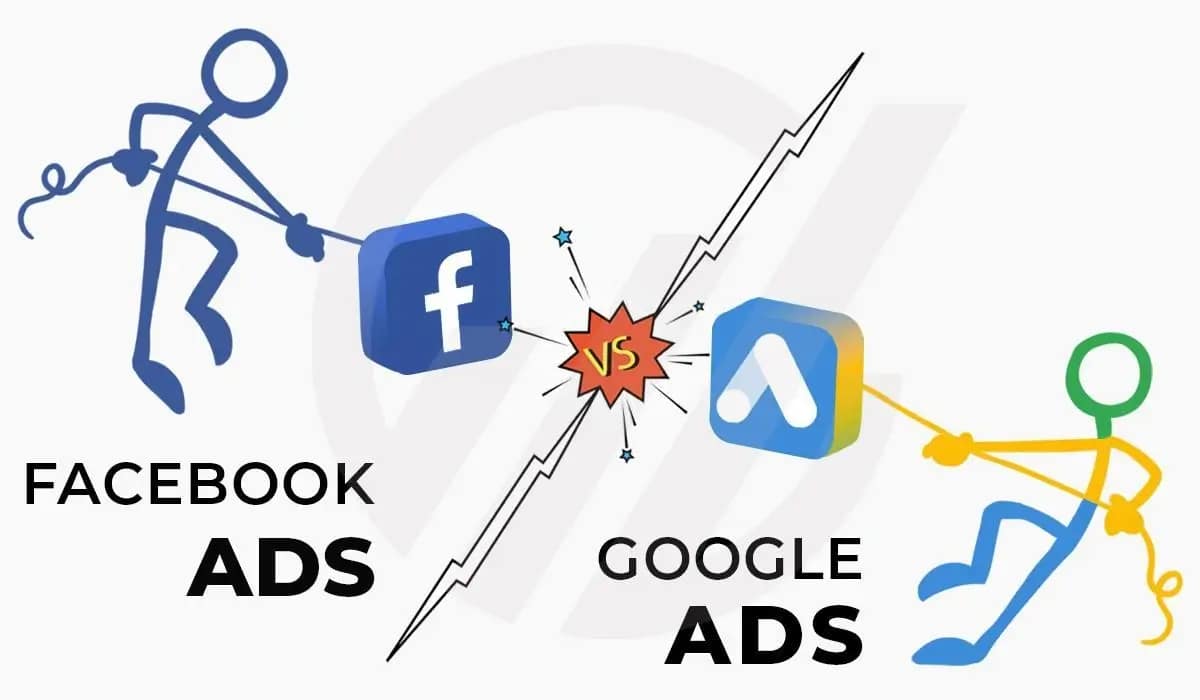
Image Source: New York Marketing
Your ad’s visual appeal shapes how people interact with it. Both platforms give small businesses in India unique ways to showcase their content.
Facebook Ads: Carousel, Stories, Reels, and Feed
Facebook’s ad system helps businesses catch users’ attention through eye-catching formats. Businesses can use carousel ads to display up to 10 images or videos in one ad unit. Each image links to a different page—perfect when you want to show multiple products or tell your brand’s story step by step. These ads pull in more clicks, which makes them great for people browsing through product collections.
Stories and Reels ads fill the entire screen vertically and pop up between regular user content. These mobile-friendly formats shine when you have flash sales, time-sensitive deals, or behind-the-scenes content that strikes a chord with younger viewers. Feed ads—the basic type on the platform—blend naturally with regular posts. They show up as single images, videos, or animated GIFs mixed with other content.
Small product-based businesses in India’s busy market find Facebook valuable because it puts visuals front and center.
Google Ads: Search, Display, Shopping, and YouTube
Google’s ad platform reaches customers at different points in their buying journey. Text-only search ads appear when people look for specific solutions. This makes them ideal for service businesses.
The Google Display Network puts your ads on millions of websites and apps. Responsive display ads automatically fit into available spaces by adjusting their look and size. These eye-catching ads build brand awareness while people browse other websites.
Shopping ads put your products right in search results with images and prices—a powerful tool for online stores. YouTube offers various video ad options: skippable in-stream ads, 6-second non-skippable bumper ads, and in-feed video ads.
Facebook or Meta Ads success results of our (Dewbytes) clients in Mumbai
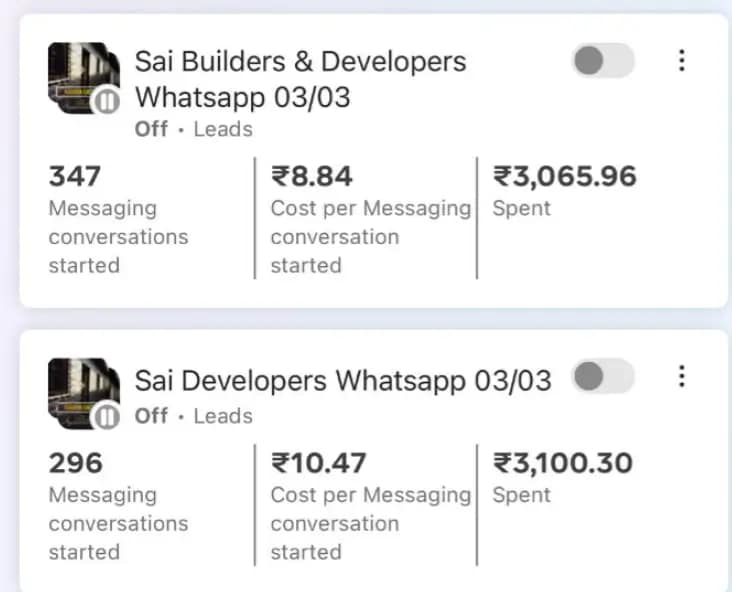
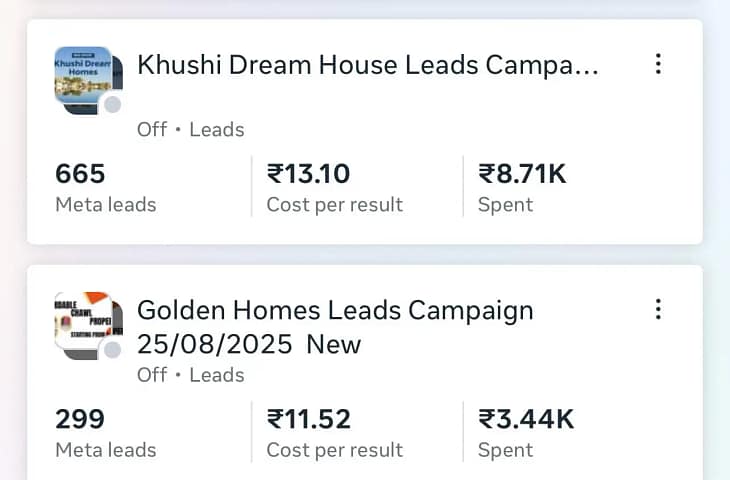
Mobile optimization and visual appeal
About 98.5% of Facebook users check the platform on their phones, so your ads must look good on small screens. Good mobile optimization needs:
- Ad formats that work smoothly on all devices
- Attractive content with sharp images and clear messages
- Easy-to-read text with good contrast on small screens
Facebook beats Google in visual impact because it focuses more on photos and videos. Notwithstanding that, both platforms offer mobile-friendly formats. Small businesses in India can make their ads stand out by using bright colors, large readable text, and crisp images that look good on phone screens.
Cost and Budget Flexibility for Small Businesses
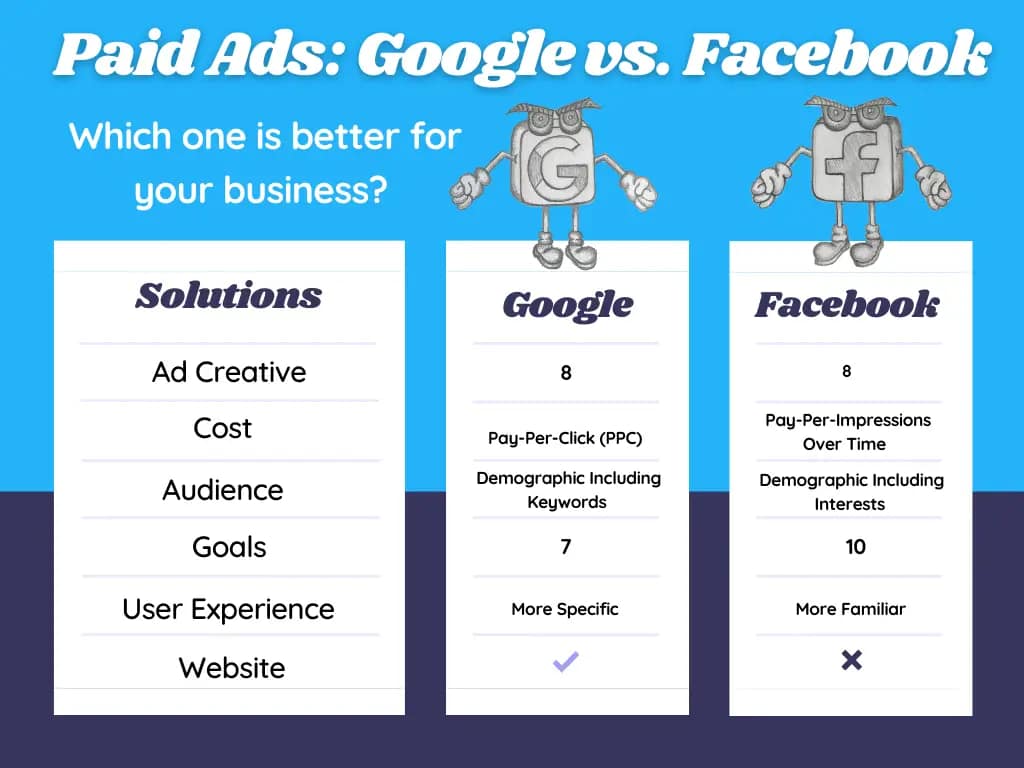
Image Source: Issuu
Small businesses in India must make marketing decisions based on their budget limitations. A clear understanding of platform costs helps them use their resources wisely to get maximum returns.
Average CPC in India: Facebook vs Google
The Indian market shows significant cost differences between these platforms. Facebook Ads cost between ₹0.51 to ₹2.26 per click. These rates make Facebook a more affordable option compared to Google Ads, which ranges from ₹5 to ₹50 per click. Google CPC can reach up to ₹421.90 per click in competitive sectors like finance. Facebook charges around ₹1.23 for the same finance sector.
Indian advertisers enjoy some of the world’s lowest Facebook advertising rates at ₹12.66 per click. These rates are significantly lower than international markets, where costs can reach ₹81.85 in the US and Canada.
Daily budget control and bidding strategies
Small businesses can benefit from flexible budget management tools on both platforms:
Facebook Ads:
- Minimum daily budgets start at ₹87.09
- Testing campaigns work well with ₹500-₹1000 daily budgets
- Successful campaigns can scale up to ₹2000-₹3000 per day
Google Ads lets businesses set comfortable daily budgets. Its Performance Planner tool helps maximize returns. Both platforms allow budget adjustments at any time. Businesses can move funds between campaigns based on immediate performance data.
Which platform offers better ROI for startups?
ROI depends on your business goals:
Google Ads shows higher immediate conversion rates. Users search with buying intent, making it great for direct sales despite higher click costs.
Facebook Ads builds brand awareness at lower impression costs. This makes Facebook valuable for startups with tight initial budgets. Many Indian e-commerce companies adjust their spending between platforms during major sales events.
Startups with limited budgets should try a balanced approach. They can put 60% of their budget into Google for direct sales and 40% into Facebook for brand building. The key lies in tracking performance metrics and adjusting based on your business model’s cost-per-acquisition results.
Performance Metrics and Conversion Tracking
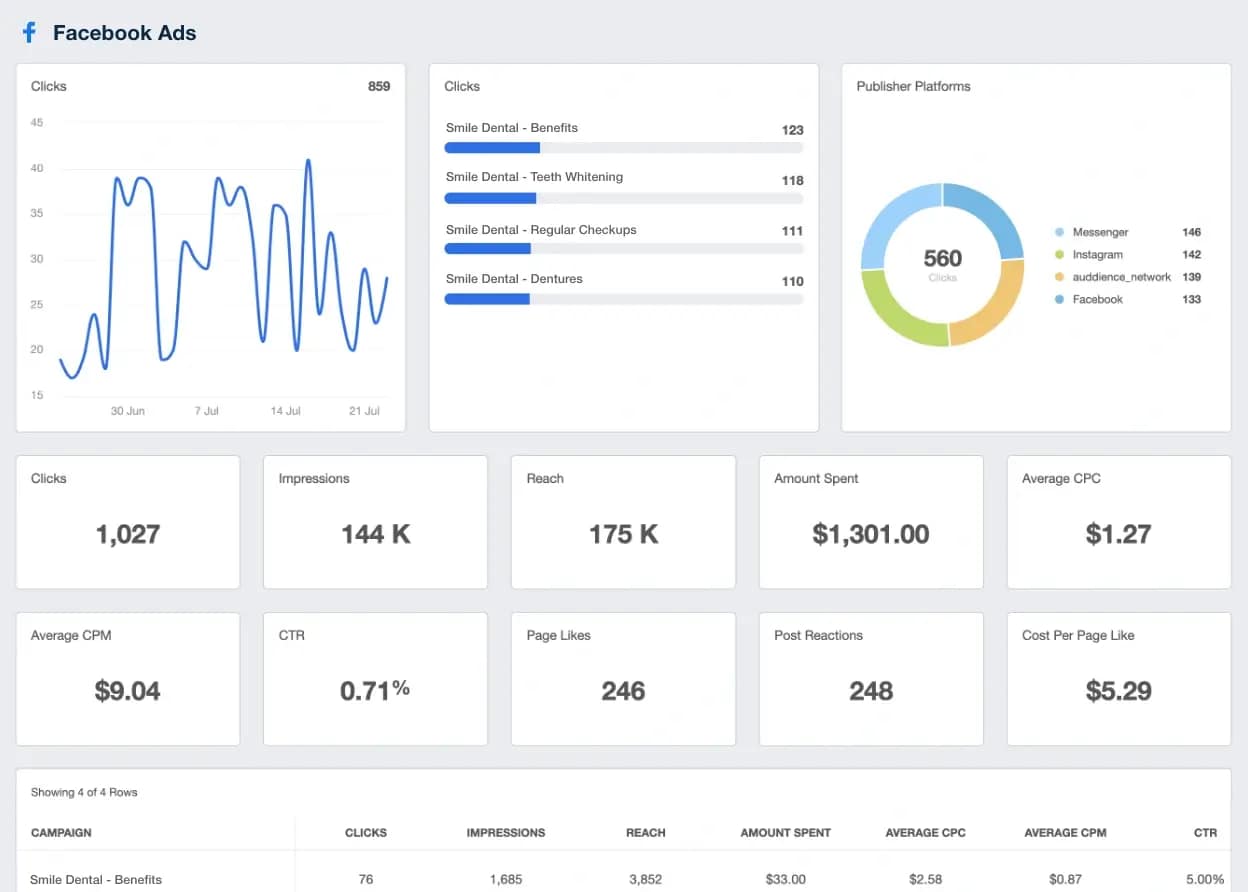
Image Source: AgencyAnalytics
Small businesses need to measure their online marketing results to succeed. Let’s get into how these platforms stack up when it comes to key performance indicators and tracking capabilities.
Click-through rate (CTR) comparison
Platform CTRs show big differences that shape campaign results. Facebook’s average newsfeed CTR stands at 1.11%, showing a 0.37% drop from last year. Stories format gets a 0.79% CTR, while right-side placements only pull in 0.16% engagement.
Google Ads campaigns perform better with CTRs around 1.57% across industries. These higher numbers come from targeting users who actively search for solutions.
Indian small businesses should note these differences. Facebook gives them wider reach but lower engagement, while Google brings fewer but more qualified clicks.
Conversion tracking setup: Facebook Pixel vs Google Tag
Each platform offers powerful tracking tools that work differently:
Facebook Pixel tracks website visitor actions after they see ads through a code snippet. This tool helps:
- Link conversions to specific Facebook campaigns
- Build custom and lookalike audiences
- Fine-tune campaigns for specific user actions
Google Tag Manager (GTM) works as a central hub to handle multiple tracking codes, including Facebook Pixel. The benefits include:
- Easy setup without heavy coding
- One place to manage all tags
- Testing and version control options
Most Indian businesses use both tools together and install Facebook Pixel through GTM for better tracking.
Real-life case study: Local business in Delhi
A Delhi business spent ₹2.17 crore on Google Ads and got 176,000 clicks from 11.2 million impressions. Their campaign results showed:
- ₹123 average cost per click
- 1.57% CTR (better than industry standards)
- Targeted optimization for high-intent keywords
The business started with broad match keywords and basic landing pages that wasted money. They switched to exact and phrase match targeting with specific landing pages. This change brought in more qualified leads.
This case shows how analyzing metrics and tracking conversions helps small businesses move past surface-level numbers to get real business results.
Ease of Use and Learning Curve
Small business owners often find that their online marketing success depends on how easy it is to use advertising platforms.
Ad Manager UI: Facebook vs Google
Facebook’s Meta Ads Manager comes with a visual, easy-to-use interface that walks you through campaign creation step by step. Most beginners feel comfortable using it right from the start. Google Ads Manager takes a different approach with its technical dashboard. Users need to understand keyword research, Quality Scores, and bidding strategies before they can use it effectively.
Support and learning resources for Indian SMBs
These platforms give Indian businesses well-laid-out learning materials:
- Facebook‘s Advertiser Success Center provides detailed guides about budget management, creative optimization, and audience targeting specifically for digital marketing for small businesses
- Google gives you extensive documentation and certification programs that help build skills you can use on any platform
The skills you gain from either platform—campaign management, analytics, and optimization techniques—can transfer easily between them. This helps improve your overall digital marketing abilities.
Which is easier for first-time advertisers?
Time needed to learn shows clear differences:
- Facebook: First campaign launch (1-3 days), simple proficiency (2-3 weeks)
- Google: First campaign launch (1-2 weeks), simple proficiency (4-6 weeks)
Facebook stands out as the easier option because most people already know how social networks work. While Facebook’s main challenge lies in creating eye-catching visuals, Google’s complexity often means small businesses need professional marketers to run effective campaigns.
Comparison Table
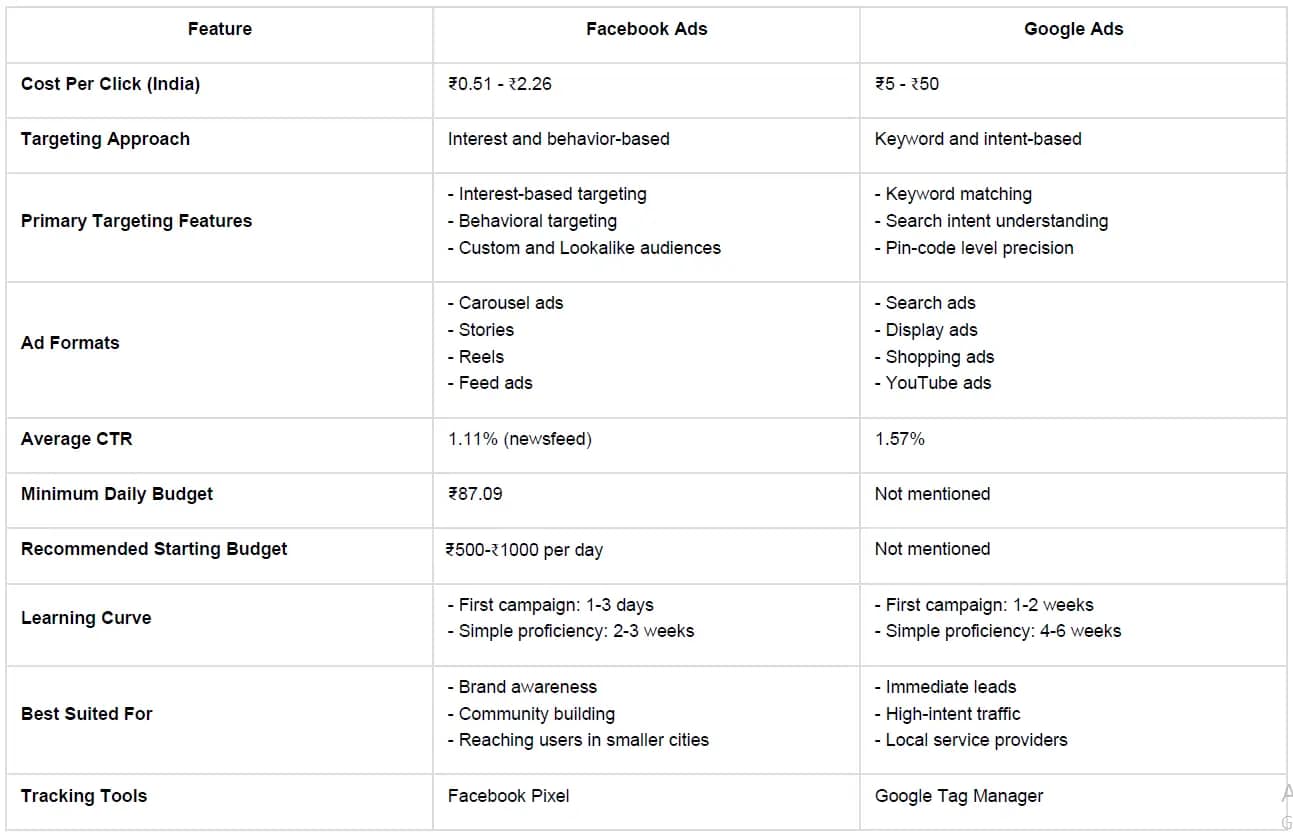
Conclusion
Small businesses in India have two main choices for digital marketing: Facebook Ads and Google Ads. Facebook Ads costs between ₹0.51 to ₹2.26 per click, while Google Ads ranges from ₹5 to ₹50. This big price gap makes Facebook a great starting point for businesses with tight marketing budgets.
Each platform shines in different ways. Facebook helps build brand awareness and connect with communities. Its powerful targeting system works well to reach audiences in smaller cities based on interests and behaviors. Google captures users who are ready to buy through keyword targeting. This makes it perfect for businesses looking for quick leads and sales, even though it costs more per click.
The ad formats on these platforms are quite different. Facebook offers eye-catching options like Carousel, Stories, and Reels that blend naturally with social media content. Google provides various touchpoints through Search, Display, Shopping, and YouTube ads to reach customers at different buying stages.
Looking at performance, Google shows a slightly higher average CTR (1.57%) compared to Facebook’s newsfeed CTR (1.11%). Facebook delivers more impressions for the same budget. Small businesses should look at which platform brings better cost-per-acquisition for their specific needs.
The platforms also differ in ease of use. Facebook’s user-friendly design lets new advertisers start campaigns within days. Google’s technical dashboard takes weeks to learn properly. This often helps businesses decide which platform to try first.
Many successful Indian businesses use both platforms wisely. They put about 60% of their budget into Google for direct sales and 40% into Facebook for brand building. This balanced approach makes the most of each platform’s strengths.
Digital marketing choices can feel overwhelming. We suggest talking to experts who know both platforms well. Dewbytes, one of the best Digital Marketing Agencies in Guwahati and India, can help create a strategy that maximizes your advertising investment.
Your business goals, budget, and target audience should guide your platform choice. Whether you pick Facebook’s economical brand-building features or Google’s high-intent traffic conversion potential, your small business can grow in India’s digital marketplace with the right approach.
Key Takeaways
Here are the essential insights from comparing Facebook Ads and Google Ads for small businesses in India:
• Facebook Ads cost 5-10x less than Google Ads in India (₹0.51-₹2.26 vs ₹5-₹50 per click), making them ideal for budget-conscious startups building brand awareness.
• Google Ads capture high-intent buyers actively searching for solutions, delivering higher conversion rates despite premium pricing – perfect for immediate lead generation.
• Facebook excels at visual storytelling through Carousel, Stories, and Reels formats, while Google dominates across Search, Display, and YouTube touchpoints throughout the customer journey.
• Learning curves differ dramatically: Facebook campaigns launch in 1-3 days with basic proficiency in 2-3 weeks, while Google requires 1-2 weeks to launch and 4-6 weeks to master.
• Strategic budget allocation works best: Successful Indian businesses typically invest 60% in Google for direct sales and 40% in Facebook for brand building to maximize ROI.
The platform choice ultimately depends on your specific goals – Facebook for affordable brand awareness and community building, Google for capturing ready-to-buy customers. Many thriving small businesses in India use both platforms strategically rather than choosing just one.
FAQs
Q1. Which platform is more cost-effective for small businesses in India: Facebook Ads or Google Ads?
Facebook Ads are generally more cost-effective for small businesses in India, with costs ranging from ₹0.51 to ₹2.26 per click, compared to Google Ads’ ₹5 to ₹50 per click. This makes Facebook an attractive option for businesses with limited marketing budgets. You can contact Dewbytes for your Ad service in Guwahati, Assam or other parts of Northeast states and India, as it has been the best rated Ad agency in google.
Q2. How do Facebook Ads and Google Ads differ in terms of targeting capabilities?
Facebook Ads excel at interest and behavior-based targeting, allowing businesses to reach specific audience segments based on user interests and activities. Google Ads, on the other hand, focuses on keyword and intent-based targeting, connecting businesses with users actively searching for specific products or services.
Q3. What types of ad formats are available on Facebook and Google?
Facebook offers visually engaging formats like Carousel ads, Stories, Reels, and Feed ads that blend seamlessly with users’ social experiences. Google provides diverse options including Search ads, Display ads, Shopping ads, and YouTube video ads, reaching customers at various stages of their buying journey.
Q4. Which platform has a shorter learning curve for new advertisers?
Facebook Ads has a gentler learning curve, with most beginners able to launch their first campaign within 1-3 days and achieve basic proficiency in 2-3 weeks. Google Ads typically requires 1-2 weeks to launch a campaign and 4-6 weeks to gain basic proficiency due to its more technical nature.
Q5. How do conversion rates compare between Facebook Ads and Google Ads?
Google Ads generally deliver higher immediate conversion rates as users are actively searching with purchase intent. Facebook Ads excel at brand awareness and community building, often resulting in lower cost per impression. The ideal platform choice depends on specific business objectives and target audience characteristics.
Author

About Azahar Hussain
Myself Azahar Hussain , a Digital Marketing and SEO Specialist and Founder at Dewbytes, helping businesses across Assam and the North-eastern states grow their online presence with clear, data-backed strategies. With experience in website optimization, Google ranking, and local business visibility, he focuses on simple, practical solutions that bring measurable results.
I works closely with brands to improve search performance, build strong digital identities, and generate sustainable leads through SEO, content strategy, and targeted advertising. His approach is straightforward: understand the business, analyze the audience, and plan campaigns that deliver long-term growth rather than quick, temporary spikes.
At Dewbytes, my work supports clients from small local businesses to large growing brands, ensuring each one gets personalized attention and reliable support.
Contact
- Phone: +91 7002763122
- Email: azrarn786@gmail.com
- LinkedIn: www.linkedin.com/in/azahar-hussain-819706186
Consultation & Support
If you require guidance on SEO strategy or digital brand development, feel free to get in touch. I am available for consultations and professional support based on project scope.
